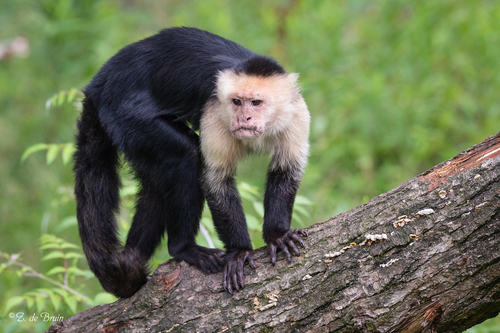
White-faced Capuchin
The white-faced capuchin, Cebus capucinus, is a clever and curious primate with striking black and white coloring. Found in Central American forests, these social monkeys are adept tool users, playing a vital role in seed dispersal within their ecosystems.
2.9 - 3.9 kg
Weight
Grey, Black, White
Color
35 mph
Top Speed
Vulnerable
Conservation Status
Decreasing
Population Trend
Characteristics
Cebus capucinus, commonly known as the white-faced capuchin, inhabits the lowland forests of Central America. They are known for their intelligence, sociable nature, and tool use. Distinctive for their white face and dark body, these monkeys are highly adaptable, often seen in diverse environments from mangroves to tropical dry forests.
Distribution Range of the White-faced Capuchin
Cebus capucinus, commonly known as the white-faced capuchin, is native to Central America. Its geographical distribution includes countries such as Honduras, Nicaragua, Costa Rica, and Panama. It is also found in the northwestern regions of Colombia and Ecuador in South America.
White-faced Capuchin's Habitat
Environmental Conditions
The white-faced capuchin inhabits a variety of forest types including tropical dry forests, moist forests, and mangroves. It is adaptable to different environmental conditions but generally prefers areas with dense canopy cover. This species can be found from sea level up to altitudes of about 1,500 meters.
Ecological Niche
Cebus capucinus is an arboreal species, spending most of its time in the trees. It plays a crucial role in seed dispersal due to its frugivorous diet, which includes fruits, seeds, and nuts. It also consumes insects and small vertebrates, making it an omnivorous feeder. Its ability to adapt to various forest environments aids in its survival and ecological contribution within these ecosystems.
Copyright @ Nature Style Limited. All Rights Reserved.
 English
English